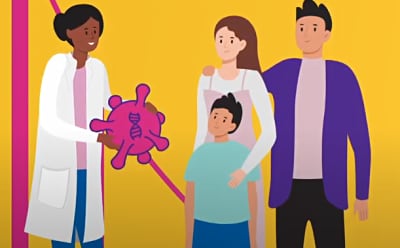Viral Vector Downstream Processing
Viral vector purification processes have historically been based on systems used for monoclonal antibodies, which are not designed to deliver the necessary level of recovery.
The introduction of new technologies specifically designed for gene therapy viral vector downstream processing offers the opportunity to increase yield and throughput. Among the approaches that can be leveraged to optimize viral vector downstream processing include:
- Ultrafiltration/diafiltration operations, particularly with the use of tangential flow filtration (TFF) for cell or viral harvesting and purification, downstream protein concentration and diafiltration, as well as in final formulation
- Intensified chromatography processes that reduce the number and size of unit operations, via technologies such as high-productivity, single-use chromatography membrane adsorbers
These downstream technologies offer the potential to reduce viral vector purification times from hours to minutes, while improving recovery. In addition, they can facilitate scale-up, reduced the process footprint, and enable more efficient facility utilization.
Related Technical Articles
Find More Articles
Primary Clarification
The crude medium containing viral vectors is depth filtration or a combination of both centrifugation and depth filtration to remove large cellular debris and other contaminants.
Secondary Clarification
Clarified medium from the primary clarification is further purified through additional steps.
Ultrafiltration/Diafiltration
Ultrafiltration and diafiltration are used for concentration and buffer exchange, respectively. The viral vector is separated from impurities using size-based filtration. Diafiltration removes salt and other molecules, replacing with the buffer of choice.
Chromatography
At least two chromatography methods are used to purify the viral vector including ion exchange, affinity and size exclusion.
Virus Filtration
The purified viral vector is subjected to nanofiltration with 15 nanometers pores to remove adventitious viruses, endotoxins, and any other remaining impurities and aggregates.
Sterile Filtration
Sterile filtration, or bioburden reduction, can be used multiple times in the process. The feed stream is passed through a 0.4 or 0.2 micron sterilizing grade filter to remove bacteria and other microorganisms that have been introduced during the processing.
Final Fill
The purified and sterile viral vector is filled into the final intended container. Careful considerations need to be given here for formulation, packaging materials, storage condition to ensure stability and integrity.
Related Resources
- Shear ignorance? Think again: Breaking the perception of shear within viral vector manufacturing
This podcast transcript discusses best practices – and common misconceptions – when establishing process conditions and utilizing different TFF device formats.
- Pellicon® Capsules versus Hollow Fibers for Ultrafiltration/Diafiltration (UF/DF) in Viral Gene Therapy Manufacturing
This application note discusses methodology and experimental results in the performance evaluation of Pellicon® Capsules versus hollow fibers for UF/DF of viral vectors and describes the impact of either filter type on a TFF process.
- /deepweb/assets/sigmaaldrich/marketing/global/documents/352/641/pellicon-capsule-aav-ot11666en-ms.pdf
Part of the linearly scalable Pellicon® family of TFF filters, single-use Pellicon® Capsules and scale-down Pellicon® XL 50 cassettes provide reliability and reproducibility at any stage of your AAV process, from development to manufacturing
- /deepweb/assets/sigmaaldrich/marketing/global/documents/987/212/pellicon-capsule-vgt-tb11669en-ms.pdf
In this technical brief, we discuss use of our new single-use technology for tangential flow filtration (TFF) of viral vectors during the evaluation of two TFF operating control strategies.
- /deepweb/assets/sigmaaldrich/marketing/global/documents/407/540/podcast-empty-full-separation-ot9653en-ms.pdf
This article explains the need for a more nuanced understanding of AAV capture and empty–full separation, and the trends driving innovation in this area.
Workflow


Viral Vector Upstream Processing
Making the right upstream process decisions not only impacts viral vector titer, but downstream processes, timelines, and regulatory acceptance

Viral Vector Formulation and Final Fill
Formulating a commercially viable gene therapy demands a high level of application and regulatory expertise

Viral Vector Characterization and Biosafety Testing
Critical biosafety testing and characterization of viral vector products can help to fully analyze key quality attributes: identity, potency, safety, and stability

Viral Vector Contract Development and Manufacturing
CDMO partnerships play a critical role in advancing clinical pipelines and achieving successful commercialization
To continue reading please sign in or create an account.
Don't Have An Account?